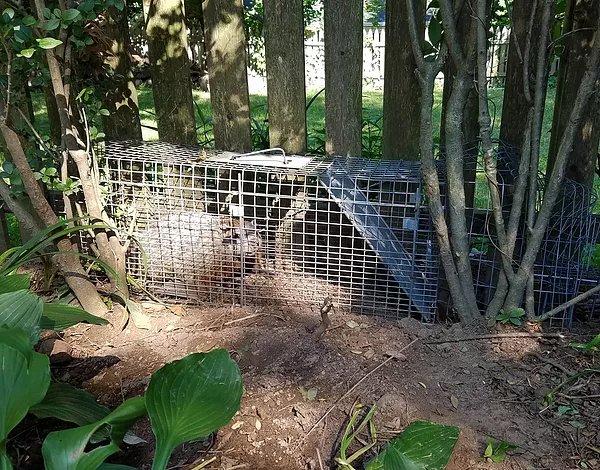Common names include ground hog, hedge hog or woodchuck.
Adults can weigh up to about 15 pounds, are usually tan in color, are active during the day and have a short tail. They are most known for eating almost any garden vegetable before the homeowner. They are also known for the burrows that can undermine foundations, sidewalks or driveways.

Control Measures
There are no poisons or pesticides labeled for control of ground hogs. Trapping or exclusion are the methods of control that are available.

The key to solving your wildlife issue is to determine what is getting in and how they are getting into your structure. We will inspect the property to determine where the access areas are. We can take pictures of the areas and show you exactly what is going on. Once we know what we are dealing with we can provide several options to deal with the problem.
Some options might include:
-
Exclusion: We want to exclude the pest from getting into the house. If there are multiple holes we will close all of them except one. Then, we install a “one-way door or funnel”. This device allows the animal to get out but not back in again. After waiting a few days the device is removed and the final hole closed. It should be noted that this method leaves the animal(s) alive and in familiar territory so it has the best chance of finding another home.
-
Trapping: We can leave a trap or traps set for the animal(s) and once we have caught it(them) we can close up the access hole.

The key to solving your wildlife issue is to determine what is getting in and how they are getting into your structure. We will inspect the property to determine where the access areas are. We can take pictures of the areas and show you exactly what is going on. Once we know what we are dealing with we can provide several options to deal with the problem.
Some options might include:
- Exclusion: We want to exclude the pest from getting into the house. If there are multiple holes we will close all of them except one. Then, we install a “one-way door or funnel”. This device allows the animal to get out but not back in again. After waiting a few days the device is removed and the final hole closed. It should be noted that this method leaves the animal(s) alive and in familiar territory so it has the best chance of finding another home.
- Trapping: We can leave a trap or traps set for the animal(s) and once we have caught it(them) we can close up the access hole.

